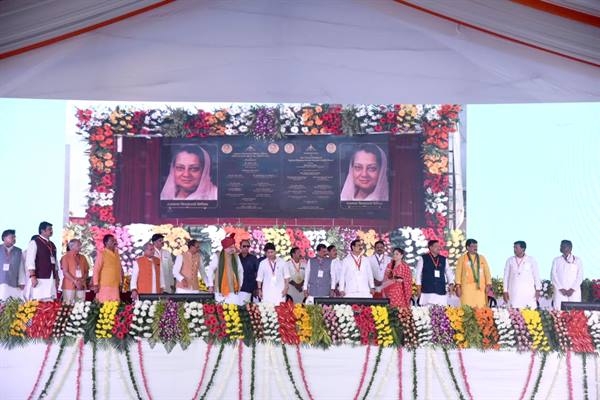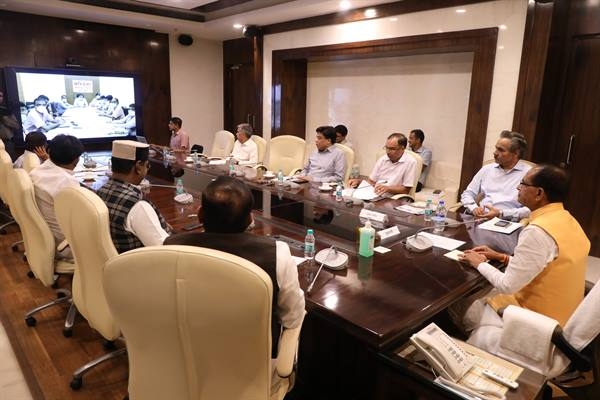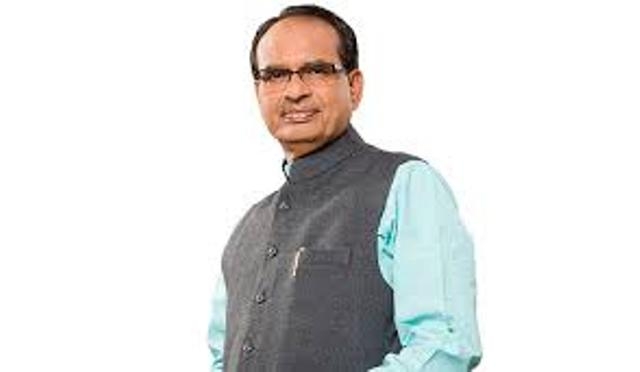Exhibition Focusing “Sikkon Ki Kahani’ from 600 B.C. to 6th Century Begins
Tuesday - March 28, 2017 3:06 am ,
Category : MADHYA PRADESH

Bhopal: Copper, Silver and Gold coins of Maurya, Kushan till Gupta era narrate the story of Indian history. A photo exhibition ‘Sikkon Ki Kahani’ from 600 B.C. to 6th century has been organised by the Directorate Archeology, Archives and Museum at State Museum situated at Shyamla Hills Bhopal with an aim to introduce people through coins prevailing at that time with the religious, cultural, beliefs and traditions. The exhibition will remain open for the visitors from March 27 to April 5 from 10.30 a.m. to 5.30 p.m.
Commissioner Archeology Anupam Rajan while narrating the history of coins, said that coins were prevalent in Indian trade before Christ. Coins were introduced in around 6th century before Christ. The initial coins were called ‘Panchmark’ (Ahat Mudra) because of their unique manufacturing style. The Ahat Mudra was introduced before the Alexander the Great attack in 4th century before Christ.
These were called Puran, Karshapan or Paana. The coins which were manufactured with only one punch used to carry one symbol. Hunchback bulls in Sourashtra coins and Swastik symbol in Panchaal area are the examples of this. These coins were made up of same standard weight which were manufactured in accurate desired weight.
Rajan further informed that mainly Surya, Vrishabh, Nandi, Hathi, Ujjaiyani symbol, Nandipad symbol, Vriksha, Ardhchandra, Ashva, Singh, Swastik, Aquatic Animals and various forms of Shiva were stamped in Ahat Mudras.
History of “Sikkon Ki Kahani”
The starting section of “Sikkon Ki Kahani” photo exhibition is focused on these Ahat Mudras. After the Ahat Mudra, the Indo –Greek rule was there from year 180 before Christ till 10th century in this area of South Asia. The most famous ruler was Menander, who made Sialkot (Pakistan) as his capital. Mostly head of King on head side of the coin and Devi Athena tail side pious elephant and inscription in Greek and Kharoshthi can be seen in their copper and silver coins. Similarly pictures of kings, praise of kings and Shiva holding trident are significant in the coins of Indo-Persian rulers.
Kushans ruled India from 30th century A.D. to 375 century. Kanishka first, Vshishth and Huvishka were famous rulers of this dynasty. On the head side of the coin where king’s image was reflected performing havan in hom kund or riding an elephant, on the tail side of the coin pictures of Mahatma Buddha, Kushan Devi Nana, Vayu Devi, Samaraddhi Devi and Lord Shiva can be seen in gold, silver and copper coins of Kushan era kings.
In the final section of the exhibition, pictures of gold, silver and copper coins of rulers of Gupta era which is called a golden era of India are exhibited. The specialilty about the Gupta era coins are that the character specialties of kings like bravery, love for art, devotion have been reflected effectively in the coins. Importance given to Devi Laxmi in these coins certify that the rulers of Gupta era would have been worshippers of Devi Laxmi.-WTN
Commissioner Archeology Anupam Rajan while narrating the history of coins, said that coins were prevalent in Indian trade before Christ. Coins were introduced in around 6th century before Christ. The initial coins were called ‘Panchmark’ (Ahat Mudra) because of their unique manufacturing style. The Ahat Mudra was introduced before the Alexander the Great attack in 4th century before Christ.
These were called Puran, Karshapan or Paana. The coins which were manufactured with only one punch used to carry one symbol. Hunchback bulls in Sourashtra coins and Swastik symbol in Panchaal area are the examples of this. These coins were made up of same standard weight which were manufactured in accurate desired weight.
Rajan further informed that mainly Surya, Vrishabh, Nandi, Hathi, Ujjaiyani symbol, Nandipad symbol, Vriksha, Ardhchandra, Ashva, Singh, Swastik, Aquatic Animals and various forms of Shiva were stamped in Ahat Mudras.
History of “Sikkon Ki Kahani”
The starting section of “Sikkon Ki Kahani” photo exhibition is focused on these Ahat Mudras. After the Ahat Mudra, the Indo –Greek rule was there from year 180 before Christ till 10th century in this area of South Asia. The most famous ruler was Menander, who made Sialkot (Pakistan) as his capital. Mostly head of King on head side of the coin and Devi Athena tail side pious elephant and inscription in Greek and Kharoshthi can be seen in their copper and silver coins. Similarly pictures of kings, praise of kings and Shiva holding trident are significant in the coins of Indo-Persian rulers.
Kushans ruled India from 30th century A.D. to 375 century. Kanishka first, Vshishth and Huvishka were famous rulers of this dynasty. On the head side of the coin where king’s image was reflected performing havan in hom kund or riding an elephant, on the tail side of the coin pictures of Mahatma Buddha, Kushan Devi Nana, Vayu Devi, Samaraddhi Devi and Lord Shiva can be seen in gold, silver and copper coins of Kushan era kings.
In the final section of the exhibition, pictures of gold, silver and copper coins of rulers of Gupta era which is called a golden era of India are exhibited. The specialilty about the Gupta era coins are that the character specialties of kings like bravery, love for art, devotion have been reflected effectively in the coins. Importance given to Devi Laxmi in these coins certify that the rulers of Gupta era would have been worshippers of Devi Laxmi.-WTN



